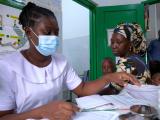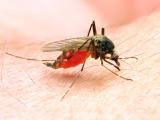Jul 16, 2012
Cholera cases in Cuba increase to 158
Health officials in Cuba reported 158 cholera cases on Jun 14, up from 110 just 4 days prior, the Associated Press (AP) reported. However, Cuban Health Ministry authorities said deaths from the disease remain at three and the outbreak appears to be contained. They said there is no evidence of foodborne disease spread and that isolation and education efforts appear to have been effective. Almost all the cases have come from Manzanillo, a city 430 miles east of Havana. "We have diagnosed isolated cases in other regions of people that were infected in Manzanillo, all of whom were treated and studied quickly," the ministry said. "There has been no spread of the outbreak." The nation first announced the outbreak on Jul 3, attributing the cases to a contaminated water supply.
Jul 14 AP story
Jul 12 CIDRAP News item on the outbreak
E coli sickens dozens at Ohio company picnic
County health officials in Dayton, Ohio, are investigating an Escherichia coli O157:H7 outbreak linked to a Jul 3 lawn care company employee picnic that has so far sickened at least 62 people. Public Health–Dayton and Montgomery County (PHDMC) said in a Jun 13 statement that 13 patients have been hospitalized, including a 4-year-old girl who is in critical condition with hemolytic uremic syndrome (HUS), a potentially fatal kidney complication. As many as 300 people may have attended the company's annual picnic, PHDMC said, urging people who got sick after attending the event to come forward. So far E coli O157:H7 infections have been confirmed in 11 of the patients, but investigation hasn't revealed what food was contaminated. Health department spokesman Bill Wharton said several people who attended the picnic brought food to share, and the company supplied some of the food at the event, which is making it difficult to pinpoint the source, according to a Jul 13 Dayton Daily News story. PHDMC said in its statement that authorities are exploring food sources, handling practices, temperature controls, and the possibility of cross-contamination.
Jul 13 PHDMC statement
Jul 13 Daily News story
Study finds pandemic H1N1 deaths similar in both waves
Although death profiles can vary among pandemic waves, fatality patterns in the spring and fall waves of the 2009 H1N1 pandemic remained largely similar, according to a study today by researchers at the US Centers for Disease Control and Prevention in Influenza and Other Respiratory Viruses. From 4,053 deaths reported Sep 1 to Oct 31, 2009, researchers picked a group of 323 nationally representative deaths and analyzed the patients' demographic factors, underlying medical conditions, and medical care and sequelae. Investigators found that the age distribution was similar between the two pandemic waves. From April through July the median age was 43 years and during the early fall wave it was 45, similar to what some European countries have reported. During the spring wave 76% of all deaths occurred in people ages 18 to 64, compared with 74% in the fall. Most cases (72%) from the fall wave had at least one underlying risk factor, such as morbid obesity and chronic lung conditions. The researchers also found that 18% of the patients who died had a history of drug or substance abuse, which appears to be higher than the proportion for the general US population. Though most patients received antiviral treatment, only about one-third got them within 1 to 2 days of symptom onset, as recommended.
Jul 16 Influenza Other Respi Viruses abstract
Expert pushes for Myanmar inclusion in malaria-fighting efforts
A health official familiar with malaria in Myanmar recently warned global donors to include the country in efforts to battle the disease, due to the discovery earlier this year of artemisinin resistance at the border with Thailand, AlertNet reported. Frank Smithuis, who formerly led Doctors Without Borders efforts in Myanmar, said an additional 100,000 to 200,000 children could die from malaria each year if the artemisinin-resistant parasite isn't curbed and is allowed to spread to India and Africa. He said Myanmar has been left out of coordinated international efforts to fight malaria, because officials have feared the funds could be used to support Myanmar's military regime. Last year a reform government took control. Smithuis, who has worked in Myanmar since 1994, urged donors to support the government's artemisinin resistance containment plan. The WHO has said the disease in Myanmar poses a global risk because because of the reliance on a single drug, which is less effective, a migrant population, and its proximity to India.
Jul 13 AlertNet story
Pakistan kicks off campaign to vaccinate millions against polio
Pakistan officials aim to vaccinate 6.1 million children against polio in 3 days in the country's conflict-torn tribal region and another affected province starting today, Xinhua, China's state news agency, reported yesterday. Regional immunization deputy director Dr. Janbaz Afridi said 11 polio cases have been reported in Federally Administered Tribal Areas (FATA) and 4 in Khyber Pakhtunkhwa province this year. Afridi said 17,000 immunization teams will administer oral vaccine to 5.1 million children in Khyber Pakhtunkhwa, while 3,000 teams will administer doses to about a million kids in FATA. The region has been a historically difficult area to access because of its rugged terrain, political unrest, and military conflicts. The 3-day campaign will target other parts of the country, as well. Pakistan, Afghanistan, and Nigeria remain the world's only polio-endemic countries.
Jul 15 Xinhua article
















